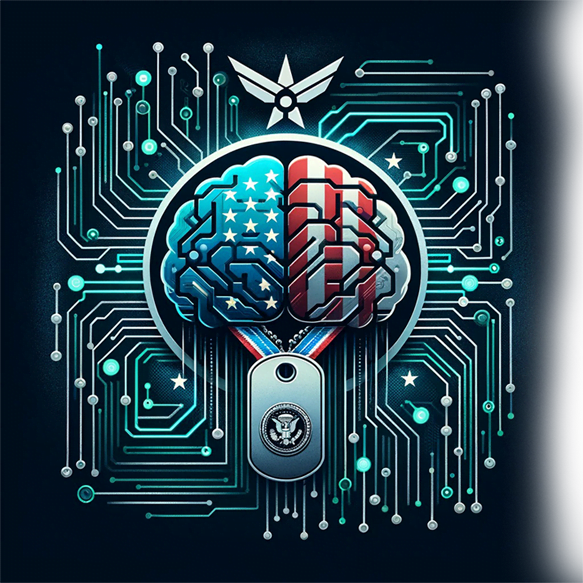
What Cloud Computing Can Do For the Education Industry
Cloud computing is a term that is used to describe the storing and accessing of data and files over the internet. It has become a popular way for businesses to manage their IT infrastructure, as it provides many benefits that traditional on-premises systems cannot. In this blog post, we will explore how cloud computing can benefit the education industry by reducing costs, improving efficiency, and providing more flexibility.
Cloud computing has already made a big impact on the business world and is now beginning to revolutionize the education industry. By moving educational resources and applications to the cloud, schools and universities can provide their students with any time, anywhere access to the latest information and tools they need to succeed.
Cloud computing can also help educational institutions save money by reducing IT costs and increasing efficiency. With cloud-based solutions, there is no need to maintain expensive on-premise infrastructure or keep up with complex software updates. Instead, schools can focus on their core mission of providing quality education to their students.
There are a number of different ways that cloud computing can be used in education, such as:
- Online learning platforms: Cloud-based learning platforms like Blackboard and Canvas offer a convenient and cost-effective way for schools to deliver online courses. These solutions make it easy for instructors to create and manage their course content and for students to access and submit assignments from anywhere.
- Student information systems: Student information systems (SIS) help educators keep track of student data, including grades, transcripts, and contact information. By moving these systems to the cloud, schools can provide their staff with any time, anywhere access to critical data. Additionally, cloud-based SIS solutions are often more affordable than on-premise ones.
- Collaboration tools: Cloud-based collaboration tools like Google Apps for Education and Microsoft Office 365 make it easy for students and teachers to work together on projects and assignments. These tools also allow educators to create virtual classrooms where they can share resources and communicate with their students online.
- Administrative applications: A number of cloud-based applications are available to help educational institutions manage their finances, HR, and other administrative tasks. These solutions often offer a more user-friendly interface than on-premise software and can be accessed from anywhere.
The Application of Cloud Computing in Education
The application of cloud computing in education has revolutionized the way schools and universities operate. It has provided a new platform for educators to connect with their students and collaborate on projects and assignments. Cloud computing has also made it possible for students to access their coursework and other educational materials from any device, anywhere in the world.
In the past, schools and universities relied on traditional methods of teaching, such as face-to-face lectures and textbooks. However, these methods are no longer effective in today’s fast-paced, globalized world. Students need to be able to access information quickly and easily without having to wait for a lecture or class period. They also need to be able to collaborate with other students in real-time, regardless of location. Cloud computing has made all of this possible.
There are many different applications of cloud computing in education. One of the most popular is Google Classroom, which allows educators to create and manage digital classrooms. Using Google Classroom, teachers can post assignments, create discussion boards, and give feedback to students in real-time. Students can also access their classwork from any device, whether they are at home or on the go.
Another popular application of cloud computing in education is Moodle, which is an open-source learning management system. Moodle allows educators to create and deliver online courses. It also provides a platform for students to interact with each other and collaborate on projects. Moodle is used by millions of students and educators around the world.
Cloud computing has also made it possible for schools and universities to offer more flexible and affordable courses. In the past, courses were often only available during certain times of the year. However, with cloud computing, courses can be offered on-demand, so students can take them whenever it is convenient for them. This flexibility makes it possible for more people to receive an education.
The application of cloud computing in education is still in its early stages. However, it has already had a profound impact on the way schools and universities operate. It is expected that this impact will only grow in the years to come.
Service-Disabled Veteran-Owned Small Business (SDVOSB)
Small Disadvantaged Business (SDB)
Small Disadvantaged Business leads to enhanced innovation and creativity, as these businesses often offer unique perspectives and solutions shaped by their diverse backgrounds. Moreover, partnering with Small Disadvantaged Business can provide access to specialized skills and capabilities that might otherwise be overlooked, contributing to improved competitiveness and efficiency.

Transforming for Innovation, Sustainability and Security
Transforming for Innovation and Sustainability securing future competitive advantage
How Cloud Computing is Used in Education
Cloud computing is increasingly being used in education. Many educational institutions are now using cloud-based solutions to improve efficiency and reduce costs.
There are many ways in which cloud computing can be used in education. One way is by using cloud-based learning management systems (LMS). LMSs are software platforms that allow educators to create and deliver online courses. They can also be used to track student progress and performance.
Another way in which cloud computing can be used in education is by using cloud-based storage solutions. These solutions allow educational institutions to store data and files remotely on a secure server. This means that data can be accessed from anywhere, at any time.
Finally, cloud computing can also be used to deliver educational content to students. Many educational institutions are now using cloud-based solutions to provide their students with access to course materials, lectures, and other resources.
Cloud computing is revolutionizing education. It is making it easier for educators to create and deliver courses and for students to access course materials. It is also helping to reduce costs for educational institutions.
Benefits of Using Cloud Technologies in the Education Industry
Immersive Learning
Accessible Long-Distance Learning
Cloud technology has revolutionized the education industry by providing accessible long-distance learning opportunities. This has been a major benefit for students who are unable to attend traditional brick-and-mortar schools. Cloud-based learning platforms offer a flexible and affordable way to get an education. In addition, cloud technologies provide educators with new tools to create engaging and interactive learning experiences.
Some of the most popular cloud-based learning platforms include Coursera, Udacity, and edX. These platforms offer courses from top universities and colleges around the world. Students can take courses at their own pace and earn certificates or degrees.
Cloud technology has also made it possible for educators to create online communities where students can interact and collaborate. These communities can be used for sharing resources, providing feedback, and networking.
The use of cloud technologies in the education industry is growing at a rapid pace. More and more schools and universities are using cloud-based platforms to deliver courses. In addition, more businesses are using cloud technologies to train employees.
Cloud technology is changing the way we learn and interact with knowledge. It is important to stay up-to-date on the latest trends in order to take advantage of the many benefits it has to offer.
Personalized Education Experience
Cloud technology has revolutionized the education industry by providing a personalized education experience for every student. Traditional education models are based on standardized curricula and teaching methods that often fail to meet the needs of individual students. This “one-size-fits-all” approach to education can lead to frustration and disengagement among students, as well as poor educational outcomes.
Cloud technology provides a more personalized approach to education by allowing students to access the resources they need when they need them. With cloud-based learning management systems (LMS), students can receive customized content and instruction based on their individual needs and interests. In addition, cloud-based LMSs allow educators to track student progress and tailor content accordingly. As a result, students are more engaged in their learning and are better able to achieve their academic goals.
Cloud technology is also transforming the way educators teach. With cloud-based tools, educators can create dynamic and interactive lesson plans that engage students in their learning. In addition, cloud-based tools allow educators to collaborate with each other and share best practices more easily. As a result, educators are able to improve the quality of their instruction and better meet the needs of their students.
The benefits of cloud technology in education are evident. By providing a personalized education experience for every student, cloud technology is helping to improve educational outcomes and preparing students for success in the 21st century.
Better Engagement
Cloud technologies offer many benefits for education institutions. One of the most significant advantages is the increased engagement that they can bring to the classroom.
With cloud-based tools, students and teachers can interact in real-time, regardless of location. This makes it easy to collaborate on projects and receive feedback quickly. Additionally, online resources can be accessed from anywhere at any time, which is ideal for busy students or those who live in remote areas.
Cloud technologies also offer a more personalized learning experience. With features like adaptive learning and data analytics, students can receive tailored content that is specifically designed to help them succeed. Additionally, educators can use these tools to track student progress and identify areas for improvement.
Overall, cloud technologies offer a number of benefits that can improve engagement and learning outcomes in the education industry. With their ability to increase collaboration, provide personalized content, and track student progress, they are an essential part of any modern educational institution.
Long-Term Cost Savings
Cloud technologies offer a number of advantages for the education industry, including cost savings. The use of cloud computing can help schools and universities reduce their IT infrastructure and support costs. In addition, cloud-based solutions can provide educators with access to new and innovative teaching tools and resources. The use of cloud technologies can also help schools improve their operational efficiency and scale their operations more effectively.
The long-term cost savings benefit of cloud computing has been well documented in a number of industries, and the education sector is no exception. A report by Market Research Future found that the global education market is expected to grow at a compound annual growth rate (CAGR) of 6.73% from 2018 to 2023, reaching a value of $8.679 billion by 2023. The report attributes this growth to the increasing adoption of cloud technologies by educational institutions.
According to the report, “the use of cloud-based applications and services in the education sector is on the rise owing to the numerous benefits offered by these solutions such as cost savings, flexibility, scalability, and enhanced security.” The report goes on to say that “the education sector is one of the major end users of cloud computing services due to the growing need for cost-effective and flexible IT infrastructure.”
In order to realize the long-term cost savings benefit of cloud technologies, educational institutions need to make a strategic decision to move to the cloud. This decision requires an investment in time and resources up front, but the long-term benefits of cloud technologies will far outweigh the initial investment.
Generative AI Software Integration
What clients say about Cloud Computing Technologies






Experience and Agile Expertise
Easy Access And Resource Availability
Cloud technology has been a major disruption in the education industry. It has brought about new opportunities for educators to improve the way they teach and connect with their students. Cloud technology allows educators to have easy access to resources and information, which can be used to improve the quality of education. In addition, cloud technology provides educators with the ability to collaborate with other educators around the world.
One of the main benefits of cloud technology in the education industry is that it allows educators to have easy access to resources and information. With cloud technology, educators can easily find and use resources that are available on the internet. This means that they can easily find educational materials that they can use to improve their teaching. In addition, cloud technology allows educators to share resources with other educators. This means that they can easily collaborate with other educators around the world.
Another benefit of cloud technology in the education industry is that it allows educators to connect with their students. With cloud technology, educators can easily connect with their students through email, chat, and video conferencing. This means that they can easily communicate with their students and help them learn more effectively. Additionally, cloud technology allows educators to monitor the progress of their students. This means that they can easily identify areas where their students need improvement.
In conclusion, cloud technology has been a major disruption in the education industry. It has brought about new opportunities for educators to improve the way they teach and connect with their students. Cloud technology has allowed educators to have easy access to resources and information, which can be used to improve the quality of education. In addition, cloud technology provides educators with the ability to collaborate with other educators around the world.
What Kinds of Applications Are Being Used on the Cloud?
In the education industry, cloud-based applications are becoming more and more common. There are many reasons for this shift, but one of the biggest is that these applications offer a great deal of flexibility and scalability. With cloud-based apps, schools can tailor their solutions to fit their specific needs and budget, and they can easily scale up or down as their needs change.
There are a number of different types of cloud-based applications being used in the education industry. Some of the most popular include:
- Learning Management Systems (LMS): An LMS is a software application that helps educators manage and deliver educational content to students. Some of the most popular LMS platforms include Blackboard, Canvas, and Moodle.
- Student Information Systems (SIS): An SIS is a software application that helps schools manage student data. This can include everything from attendance and grades to contact information and health records. Some of the most popular SIS platforms include PowerSchool and Infinite Campus.
- Communications and Collaboration: There are a number of different cloud-based applications that help educators and students communicate and collaborate with one another. These can include everything from email and chat apps to video conferencing platforms. Some of the most popular communications and collaboration platforms used in education include Google Apps for Education, Microsoft Office 365, and Zoom.
- Data Analytics: Data analytics tools help educators track, analyze, and understand student data. This data can be used to improve teaching and to learn in a number of different ways. Some of the most popular data analytics platforms used in education include PowerSchool Insights, Ed Insight, and Study Island Analytics.
- Professional Development: There are a number of different cloud-based applications that help educators plan and manage their professional development. These can include everything from online courses and webinars to planning tools and assessment platforms. Some of the most popular professional development platforms used in education include PD 360, TeachBoost, and MyPLN.
The use of cloud-based applications is only going to continue to grow in the education industry. As schools look for more flexible and affordable solutions, they are turning to the cloud more and more. This shift is sure to have a major impact on the way that education is delivered in the years to come.
Cloud computing is a transformative technology that can benefit the education industry in many ways. It can help reduce costs, improve efficiency, and provide educators with new tools and resources to help students learn. If you are an educator or administrator interested in learning more about how cloud computing can benefit your school or district, please get in touch with us. We would be happy to discuss your needs and recommend solutions that fit your unique situation. Cloud Computing Technologies can provide your school or institution with the computing power and storage you need to keep up with current technological demands, all while keeping your data safe.








